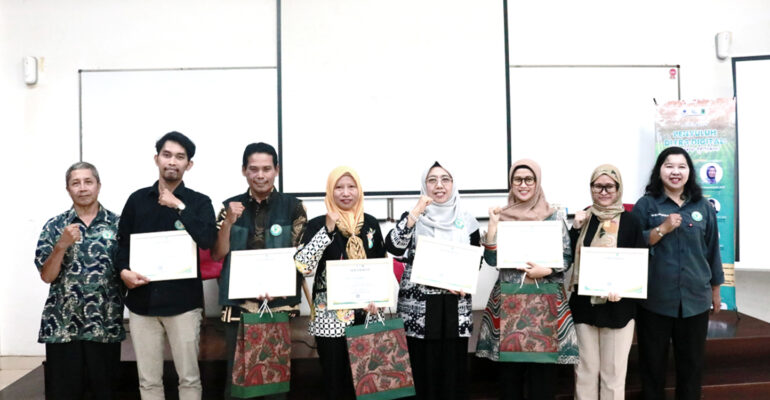Understanding the Dynamics of Agricultural Extension in the Digital Era, TNC and Himasiera IPB University Hold Tani 2024 Lecture

In commemoration of Heroes’ Day, IPB University through the Tani and Nelayan Center (TNC) together with the Student Association of Communication and Community Development Sciences (Himasiera) successfully held the Tani 2024 Lecture entitled “Extension in the Digital Era: Is it Still Necessary?”
This annual event was held offline at IPB University’s Common Classroom, and broadcasted online through Zoom Meeting and YouTube on Sunday (10/11).
Tani Lecture is an annual event held to accommodate practitioners in agriculture and fisheries, to provide their knowledge in the field to students and lecturers of IPB University. In the midst of increasingly sophisticated technological shifts, are agricultural extension workers still needed? This question was tried to be answered in this year’s event.
Motivated by the dynamics of agricultural extension in the digital era, Dr Roza Yusfiandayani as Deputy Head of TNC IPB University hopes that this activity can increase the knowledge of participants. “Hopefully with this activity, it can increase participants’ knowledge about extension, especially in this digital era.”
The Farmer Lecture was hosted by a pair of moderators, Tri Budiarto, SKPm, MSi (Lecturer of Vocational School) and Titania Aulia, SKPm, MSi (Lecturer of Department of Science Communication and Community Development/SKPM). This activity was presented by a husband and wife team from Lumajang, East Java, namely Heru Afandi, SP and Suko Damayanti, SST.
According to Heru, extension workers play an important role as facilitators, mediators, and initiators for farmers. As facilitators, they provide important information; as mediators, they help find solutions; and as initiators, they encourage innovation to increase agricultural productivity.
Heru also shared his experience as the initiator of the Gerbas Tani (Vegetable Shopping Movement in Farmers’ Fields), which is a concept of buying and selling crops without going through middlemen. “When prices fall, who will help the farmers? Yes, we ourselves as extension workers,” he said.
Suko Damayanti, SST conveyed the development of agricultural extension in Indonesia from time to time, adjusting to changes in agricultural policies and needs. Now, extension is transforming by utilizing digital technology to help farmers access market information, technology, and capital.
In the digital era, the challenges of agricultural extension include limited extension personnel, institutional capacity, and diverse farmer characteristics. “In the digital era, extension workers are also required to be able to map the potential of their fostered areas to design appropriate agricultural extension programs,” she said.
This activity was also attended by two lecturers from the SKPM Department, Dr Dwi Retno Hapsari and Dr Siti Amanah. Both provided insights into the dynamics of extension from the perspective of communication science.
Dr Retno sees extension workers as advocates for farmers by understanding their characteristics and finding solutions together, as well as building trust. In the digital era, adaptation challenges include the digital divide, training, and motivation. Utilization of technologies such as digital platforms and data analysis support extension innovation.
“Synergy with farmers, communities, and stakeholders is the key to success, making the role of extension workers remain relevant,” she said.
Meanwhile, Dr Siti Amanah assessed that the role of extension workers remains important in the digital era with clear goals and adaptive abilities. For her, extension workers need to collaborate and continue to develop through effective communication, good planning, and understanding the objectives and methods of extension.
“Extension must be visionary, understand local developments and conditions,” she explained.
This activity was enthusiastically attended by more than 300 participants consisting of lecturers, students, farmers, and extension workers from various regions in Indonesia. (RA/Rz) (IAAS/NYS)



